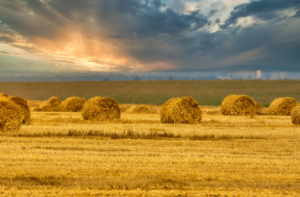Silage wrap has been used for years in the drying and rinsing of textiles. The wrapping protects the fibre from moisture, which speeds up the drying time. It also provides a protective barrier against pests. The wrap can be made of any suitable fabric or mixture of two or more fabrics. The most common materials are polyester and polypropylene.
 Many of the silage wraps are now available as baling twine, hot air and spray covers. The most common application is for wet bales, especially for crops destined for storage and transportation. The drying time is faster, and there is no need for a roller or pressurized sprayer. The hot air and spray cover provide rapid barrier covering with very good UV protection. Hot air and hot bales can be sprayed directly from a vehicle-mounted bale vacuum or the side of the bales; click to buy.
Many of the silage wraps are now available as baling twine, hot air and spray covers. The most common application is for wet bales, especially for crops destined for storage and transportation. The drying time is faster, and there is no need for a roller or pressurized sprayer. The hot air and spray cover provide rapid barrier covering with very good UV protection. Hot air and hot bales can be sprayed directly from a vehicle-mounted bale vacuum or the side of the bales; click to buy.
There are several varieties of silage wraps. The most common ones are called reliable and hot air bales. Rollable ones can be tied with a Baling Twine to the bales, placed inside the storage facility. They are then brought out to be dried or rinsed. Hot air bales have a tray where the plastic strip is heated, and the strip is pasted over the plastic bales.
The latest type of silage wrap is the hot air bale. This type of silage wrap has holes at strategic locations to allow airflow. It has a sealed bag and requires the support of a special float to prevent moisture from escaping. In addition, the float keeps the plastic strip from sticking to the sides of the bag. This type of bale does not need extra support and is effective in holding up to heavy winds.
The most popular types of silage wraps are the bailing twine and hot air bales. Both these forms are very effective at preventing the loss of moisture in agricultural plastics. Twine is made of a tough synthetic rope that can withstand high temperatures. It can also resist abrasion and damage from sunlight and fire.
Hot air and reliable bales are ideal for protecting agricultural plastics. First, high quality and durable baling twine are applied to the top surface of the plastic covering to create a tight and secure layer. After this, the plastic covering is draped and secured around the structure to avoid it from blowing away during windy conditions. As long as the silage film covering remains undamaged, the plastic bag will continue to protect the contents of the container from moisture and environmental threats; click to buy.
